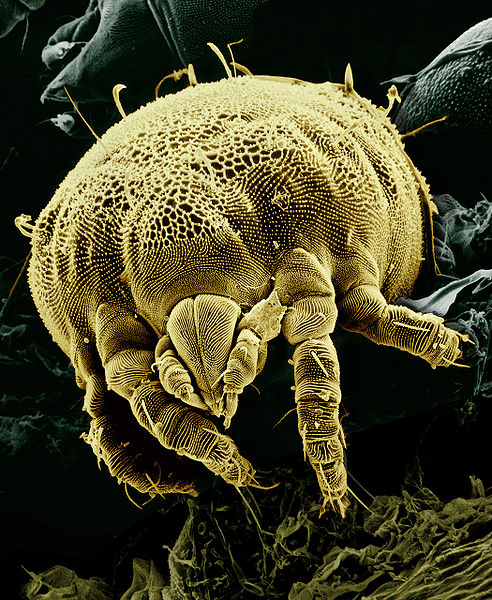Difference between revisions of "Category:Mites"
Jump to navigation
Jump to search
| (5 intermediate revisions by the same user not shown) | |||
| Line 2: | Line 2: | ||
|pagetitle =Mites | |pagetitle =Mites | ||
|pagebody = | |pagebody = | ||
| + | <div style="text-align: left; direction: ltr; margin-left: 1em;"> | ||
| + | Mites (Suborder: Astigmata) are one of the most successful and diverse vertebrate groups. The species of veterinary importance are parasitic, although a few non-parasitic mites are also important, such as oribatid mites (intermediate hosts for [[Anoplocephala|''Anoplocephala'']] and [[Moniezia|''Moniezia'']]) and forage mites. | ||
| + | The taxonomy of mites is complex as there are over 8 families. In this section the families are split according to their location on the host into sub-surface (burrowing) and surface (non-burrowing) mites. | ||
| + | </div> | ||
| + | |||
|contenttitle =Content | |contenttitle =Content | ||
|contentbody =<big><b> | |contentbody =<big><b> | ||
| Line 9: | Line 14: | ||
|logo =Mite logo.jpg | |logo =Mite logo.jpg | ||
}} | }} | ||
| − | |||
| − | |||
| − | |||
| − | |||
| − | |||
| − | |||
| − | |||
[[Category:Arachnida]] | [[Category:Arachnida]] | ||
| + | [[Category:To Do - Parasites]] | ||
Latest revision as of 21:16, 25 June 2010
Mites
Mites (Suborder: Astigmata) are one of the most successful and diverse vertebrate groups. The species of veterinary importance are parasitic, although a few non-parasitic mites are also important, such as oribatid mites (intermediate hosts for Anoplocephala and Moniezia) and forage mites. The taxonomy of mites is complex as there are over 8 families. In this section the families are split according to their location on the host into sub-surface (burrowing) and surface (non-burrowing) mites.
Subcategories
This category has the following 3 subcategories, out of 3 total.
Pages in category "Mites"
The following 3 pages are in this category, out of 3 total.
